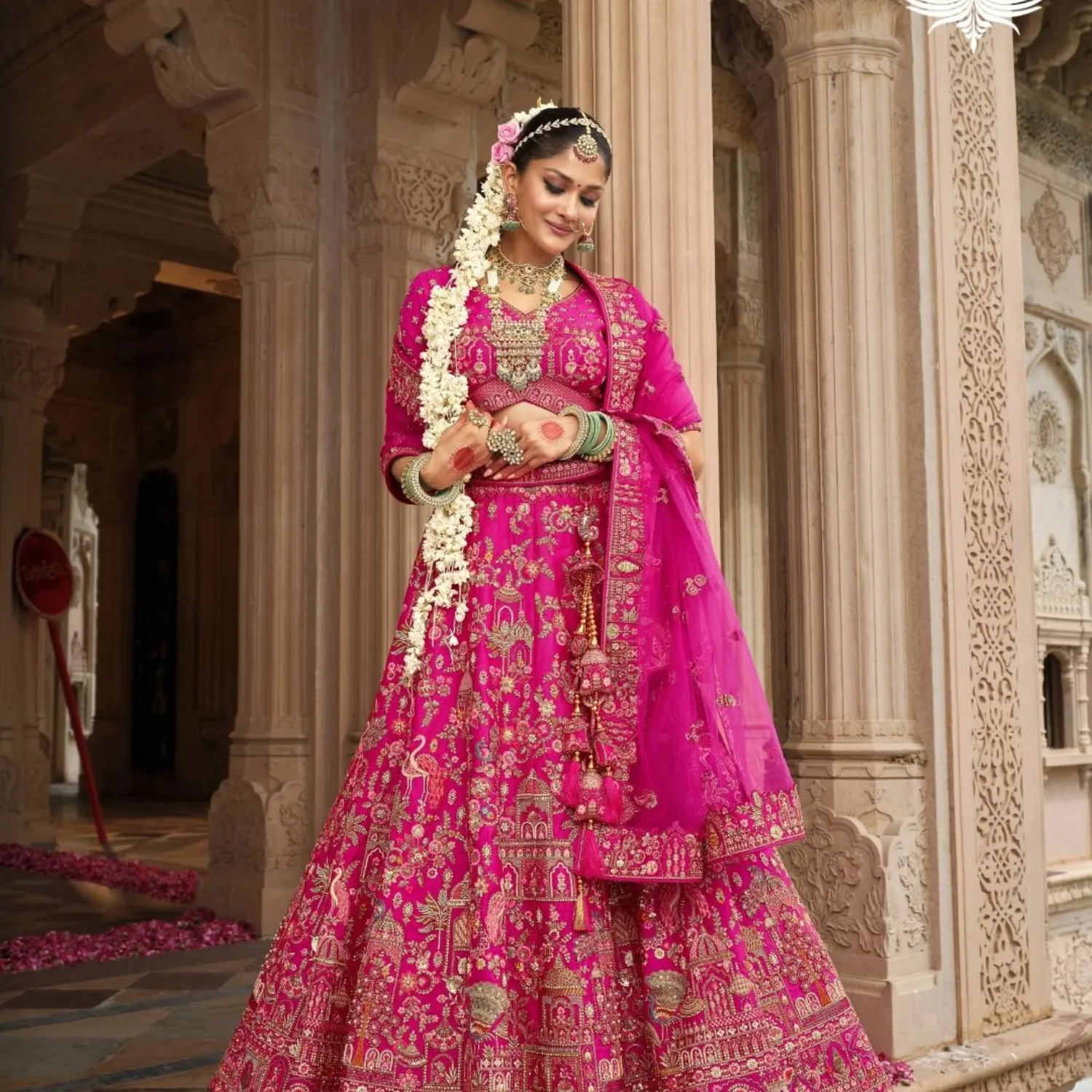Introduction
Indian bridal fashion is a living chronicle of the country’s heritage,
craftsmanship, and changing cultural influences. Every era has added a new
layer of artistry, symbolism, and design to the bridal wardrobe. Dulhan World
celebrates this evolution through its curation of garments that reflect both
historic depth and contemporary refinement. This article traces how Indian
bridal wear has transformed from ancient times to the modern boutique
experience that brides find today.
The Roots of Bridal
Attire in Ancient India
The earliest references to bridal clothing appear in Vedic literature, where
garments were often unstitched and draped elegantly. The saree and dhoti were
woven from cotton or silk, dyed with natural pigments like turmeric, indigo,
and madder. Jewellery was handcrafted from gold, silver, and semi-precious
stones, symbolising prosperity and sanctity. Bridal clothing was seen not
merely as decoration but as a spiritual and social statement, marking the union
of two families.
Royal Patronage in
the Classical and Medieval Eras
As Indian kingdoms expanded, textile art reached new heights. Dynasties in
Banaras, Kanchipuram, and Gujarat nurtured specialised weaving clusters that
produced zari-woven silks and brocades. During the Mughal period, influences
from Persia and Central Asia enriched Indian craftsmanship. Fabrics such as
muslin, jamdani, and velvet became popular, while embroidery forms like
zardozi, gota patti, and chikankari flourished. Bridal attire became more
structured, layered, and ornate, reflecting regal patronage and cross-cultural
artistry.
Colonial Impact and
the Adaptation of Modern Silhouettes
The colonial era introduced tailoring, corsetry, and Victorian influence.
Indian brides began incorporating blouses, petticoats, and fitted silhouettes
beneath traditional drapes. Colours shifted toward lighter pastels under
Western fashion influence, though red remained predominant in ceremonial
attire. Post-independence, regional bridal identities re-emerged-Bengali brides
favoured red and white Banarasi sarees, South Indian brides continued Kanjeevaram
traditions, and North Indian brides celebrated lehengas embroidered with gold
thread and mirror work.
Revival of Handloom
and Designer Intervention
From the 1970s onwards, fashion designers began reviving handlooms, embroidery,
and indigenous weaves. The Indian bridal industry grew into a blend of heritage
and couture. Lehengas evolved from purely traditional ensembles to
designer-crafted statements, blending regional craft with modern patterning.
Dulhan World represents this new era by connecting brides with authentic
craftsmanship while offering modern silhouettes that align with contemporary
tastes.
Cultural
Significance of Colour and Ornamentation
Throughout history, colour has carried deep symbolism. Red represents marital
bliss, green fertility, and gold prosperity. The embellishments-be it kundan,
meenakari, or pearls-express community identity and family heritage. Dulhan
World preserves this symbolism by curating garments that honour regional
meaning while allowing brides to personalise shades and motifs according to
their story.
From Tradition to
Technology
Today, bridal couture is influenced by digital fabric printing, global fashion
exposure, and social media inspiration. Yet at its core remains the continuity
of Indian artistry. Dulhan World bridges this past and present by ensuring that
every lehenga or saree maintains the workmanship of heritage artisans even as
designs evolve to meet modern expectations of comfort, fit, and global
aesthetic.
Conclusion
The history of Indian bridal fashion is one of evolution rather than
replacement. Each century has layered new meanings onto ancient forms,
resulting in the diverse expressions seen today. Dulhan World carries this
lineage forward, curating garments that remind every bride that she is part of
an enduring story of beauty, craft, and cultural continuity.
